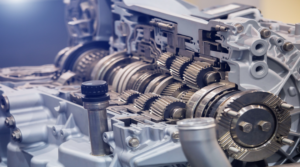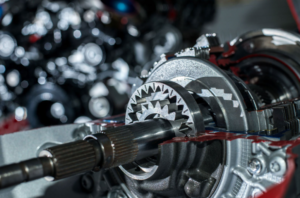Guide To Battery Types and Their Uses in Automotive
Introduction to Automotive Batteries
Different Types of Automotive Batteries
Automotive batteries can be broadly categorized based on their composition and usage. The most common types include:
Lead-Acid Batteries: Widely used in traditional internal combustion engine vehicles.
Lithium-Ion Batteries: Predominant in electric and hybrid vehicles due to their high energy density.
Nickel-Metal Hydride (NiMH) Batteries: Found mainly in hybrid vehicles.
Emerging Technologies: Batteries such as solid-state and graphene offer promising future alternatives.
Lead-Acid Batteries: A Classic Choice
Lead-acid batteries have been the cornerstone of automotive power systems for decades. These are reliable, cost-effective, and widely available.
Types of Lead-Acid Batteries:
Flooded Batteries: Conventional wet-cell batteries that require maintenance.
Absorbent Glass Mat (AGM) Batteries: Spill-proof and designed for modern vehicles with advanced electrical needs.
Gel Batteries: Designed for extreme conditions, offering enhanced resistance to vibration and spills.
Applications: Lead-acid batteries are commonly used in conventional vehicles for starting, lighting, and ignition (SLI) purposes. They also serve as auxiliary power sources in electric and hybrid vehicles.
Lithium-Ion Batteries: The Modern Powerhouse
Lithium-ion (Li-ion) batteries dominate the electric and hybrid vehicle market due to their superior performance characteristics.
Advantages:
High energy density, leading to extended range for EVs.
Lightweight compared to lead-acid batteries.
Low self-discharge rate.
Applications: Primarily used in electric vehicles (EVs) like Tesla and hybrid models. These batteries power high-performance vehicles and provide the energy necessary for sustainable mobility.
Nickel-Metal Hydride Batteries: A Balancing Act
Nickel-Metal Hydride (NiMH) batteries are a durable and efficient alternative often found in hybrid vehicles.
Benefits:
Eco-friendly with recyclable components.
Longer lifespan than lead-acid batteries.
Better suited for varying temperatures compared to lithium-ion batteries.
Applications: NiMH batteries are used extensively in hybrids such as the Toyota Prius, providing a balance between cost and efficiency.
Emerging Battery Technologies in Automotive
The automotive industry is witnessing breakthroughs in battery technology:
Solid-State Batteries: These batteries use a solid electrolyte, offering improved safety and energy density.
Graphene Batteries: Lightweight and incredibly efficient, they promise faster charging times.
Sodium-Ion Batteries: A cost-effective alternative with abundant raw materials, ideal for large-scale applications.
These advancements are expected to redefine the future of electric and hybrid vehicles.
Factors to Consider When Choosing a Battery

Selecting the right battery involves evaluating various factors:
Compatibility: Ensure the battery aligns with your vehicle’s specifications.
Climate: Extreme temperatures can affect battery performance.
Lifespan: Opt for batteries with long warranties and proven durability.
Cost: Balance initial investment with long-term savings.
Maintenance and Care of Automotive Batteries
Proper maintenance can extend a battery’s life and performance:
Regular Inspections: Check for corrosion, leaks, and secure terminals.
Cleanliness: Keep the battery surface and connections clean to avoid build-up.
Charging Practices: Avoid overcharging, which can lead to overheating.
Storage: For infrequent use, disconnect the battery and store it in a cool, dry place.
Environmental Impact of Automotive Batteries
Automotive batteries pose environmental challenges due to their chemical components. Recycling and proper disposal practices are vital to minimize ecological damage.
Solutions:
Lead-acid batteries boast a recycling rate exceeding 95%, making them environmentally friendly.
Li-ion battery recycling initiatives focus on recovering valuable metals like cobalt and lithium.
Promoting sustainable practices can help reduce the automotive industry’s carbon footprint.
Future Trends in Automotive Batteries
The evolution of battery technology continues to accelerate:
Enhanced Energy Densities: Future batteries aim to store more energy in smaller packages.
Fast-Charging Capabilities: Innovations like ultra-rapid charging systems are emerging.
Integration with Renewable Energy: Batteries will play a key role in grid storage and vehicle-to-grid (V2G) technologies.
Wireless Charging: Seamless and efficient power delivery systems for EVs are under development.
The shift toward electric mobility and sustainability will drive the automotive battery landscape for decades to come.
Final Thoughts
Understanding automotive battery types and their uses is crucial for making informed decisions as a vehicle owner. From the traditional lead-acid options to advanced lithium-ion and emerging technologies, the landscape is rich with choices tailored to various needs. Proper maintenance, recycling practices, and keeping an eye on future trends will ensure that you’re ready for the road ahead, no matter what you drive.
FAQs

Does Your Car Need High Mileage Oil? (Signs You Should Switch)
Does Your Car Need High Mileage Oil? (Signs You Should Switch) Discover More As vehicles age, their engines undergo significant wear, leading to reduced efficiency and potential breakdowns. One of the most effective ways to maintain an older engine is by switching to high-mileage oil, specially formulated for cars with 75,000 miles or more. But how do you know if your car needs it? What are the key benefits, drawbacks, and alternatives? And why should you consider Ruamnza Xrace Pro Oil for your high-mileage vehicle?

Does Your Diesel Engine Need a Special Oil? (The Truth Revealed)
Does Your Diesel Engine Need a Special Oil? (The Truth Revealed) Discover More When it comes to maintaining a diesel engine, one of the most critical decisions you’ll make is choosing the right oil. Diesel engines operate under extreme conditions—high compression, intense heat, and heavy loads—which means they require a lubricant that can withstand these challenges. But does your diesel engine really need a special oil, or can you use any high-quality motor oil? In this comprehensive guide, we’ll uncover the

What is Anti-Freeze Coolant? Types, Colors & How to Use
What is Anti-Freeze Coolant? Types, Colors & How to Use Discover More Anti-freeze coolant, also known as engine coolant or radiator fluid, is a specially formulated liquid that regulates engine temperature, prevents overheating in summer, and protects against freezing in winter. It is a mixture of water, ethylene glycol or propylene glycol, and chemical additives that enhance engine efficiency and longevity. Without proper coolant, engines can suffer from: Overheating (leading to warped cylinder heads or blown gaskets) Freezing (causing cracked engine blocks in cold climates) Corrosion (damaging radiators,

What is ATF? Types of Transmission Fluid & When to Change It
What is ATF? Types of Transmission Fluid & When to Change It Discover More Transmission fluid is one of the most critical yet often overlooked components in a vehicle’s maintenance routine. Whether you drive an automatic, manual, continuously variable transmission (CVT), or dual-clutch transmission (DCT) vehicle, the right transmission fluid ensures smooth operation, longevity, and peak performance. What is Automatic Transmission Fluid (ATF)? Automatic Transmission Fluid (ATF) is a specialized lubricant designed to reduce friction, cool transmission components, and facilitate smooth

Fuel Injector Cleaner: Does It Really Work? (Analysis, Benefits, and Top Picks)
Fuel Injector Cleaner: Does It Really Work? (In-Depth Analysis, Benefits, and Top Picks) Discover More Modern engines rely on precise fuel delivery to maintain performance, efficiency, and emissions compliance. Fuel injectors play a critical role in this process by atomizing fuel into a fine mist for optimal combustion. However, over time, carbon deposits, varnish, and contaminants can clog injectors, leading to poor engine performance. Fuel injector cleaners are chemical additives designed to dissolve these deposits and restore injector efficiency. But do they

Best Railroad Engine Oils in 2025 – Boost Performance & Longevity
Best Railroad Engine Oils in 2025 – Boost Performance & Longevity Discover More The railroad industry is a backbone of global logistics, transporting millions of tons of cargo and passengers daily. Given the immense stress on locomotive engines, selecting the best railroad engine oil is crucial for optimal performance, fuel efficiency, and engine longevity. In 2025, advancements in lubrication technology have led to high-performance synthetic blends, low-ash formulations, and smart additives that enhance engine protection under extreme conditions. This guide

Best Transmission Treatments to Extend Your Vehicle’s Lifespan (2025 Guide)
Best Transmission Treatments to Extend Your Vehicle’s Lifespan Discover More Maintaining your vehicle’s transmission is crucial for ensuring longevity, smooth performance, and fuel efficiency. With advancements in automotive technology, transmission treatments have evolved significantly in 2025. This guide explores the best transmission treatments available, their benefits, and how they can help extend your vehicle’s lifespan. Understanding Transmission Systems and Their Importance A vehicle’s transmission is responsible for transferring power from the engine to the wheels, enabling smooth gear shifts and
